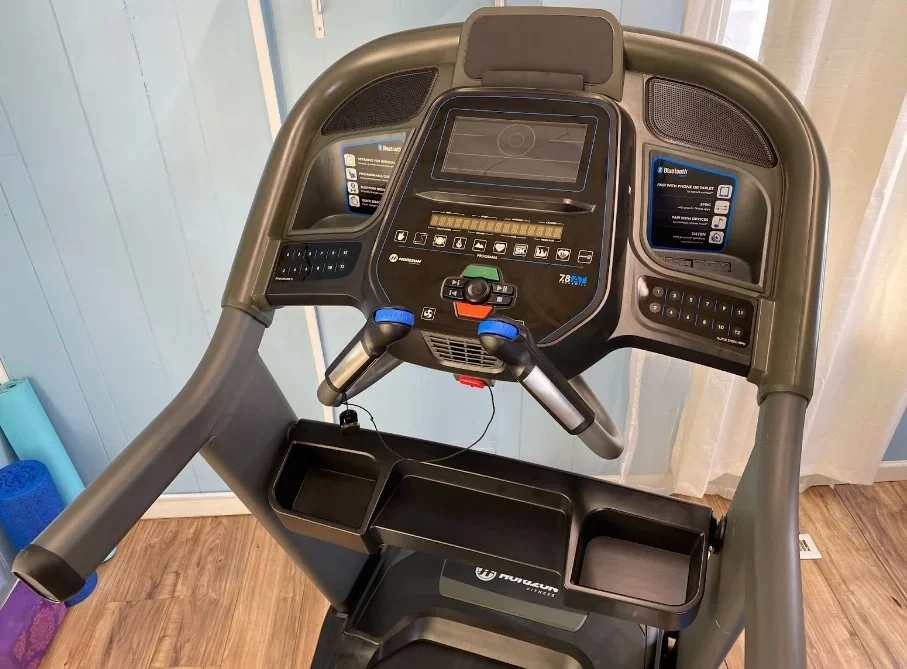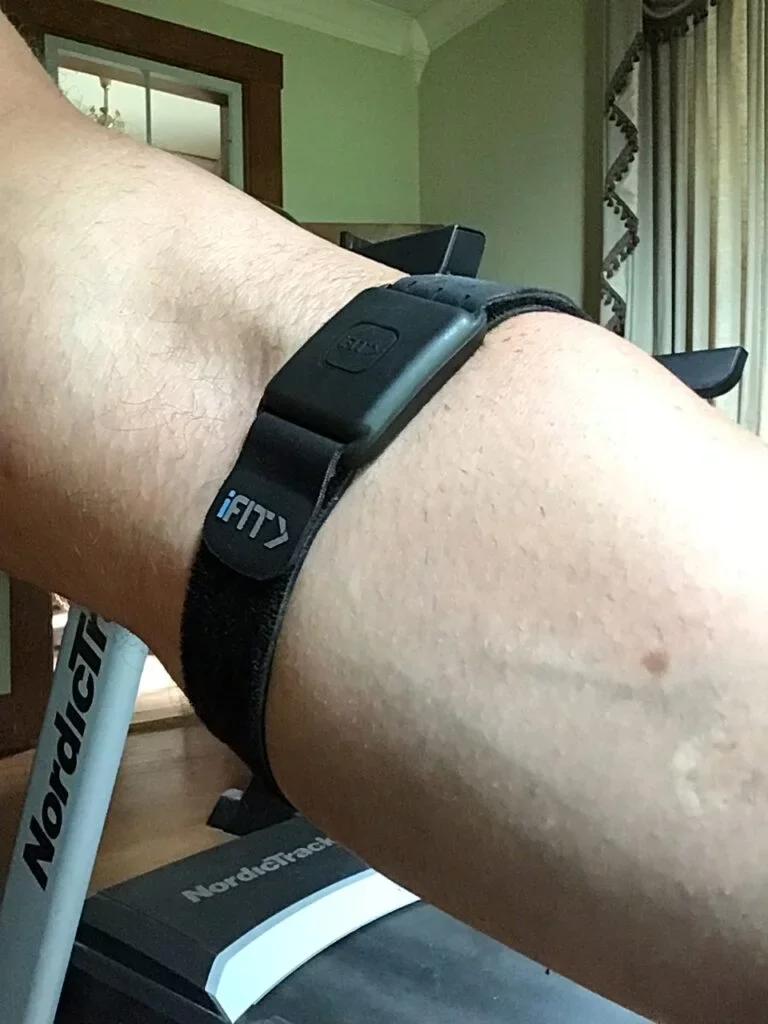Why Do I Want A Heart Rate Monitor For My Treadmill?
For serious cardio training, knowing your heart rate can be a big help. But knowing just how serious you are can make a big difference when shopping for treadmills. Most entry-level treadmills come equipped with grip-based heart rate sensors in the handlebars. More advanced units are Bluetooth-enabled and come ready for either a chest strap or armband monitor. Or, you can always shop around for a high-quality wearable you use for multiple purposes.
But there’s a big difference price wise between simply using the machine’s built-in sensors for which you’ve already paid, and spending between $100 and, yes, perhaps even $500, on a separate wearable with all the trimmings. I’ve really come to like the ActivePulse technology associated with the iFit-enabled NordicTrack treadmills as these actually control the speed and incline of your machine in accordance with your heart rate. Part of the automatic trainer control package of NordicTrack, ProForm, and FreeMotion machines, it’s fascinating to see the monitor’s AI system communicate your heart rate while adjusting the workout per your goals and past performance.
But how much data feedback and heart rate monitoring is enough for you? It all depends on your goals.
What Is A Heart Rate Monitor?
Simply put, a heart rate monitor is any device which calculates, at a minimum, the number of beats your heart is pulsing per minute. Depending on quality of the device, it can also estimate calories burned, body temperature, GPS tracking, and sleep cycles. Higher-end models also measure one’s recovery time, or the amount of time your heart needs to go from the target rate to resting rate. My Oura ring for instance also calculates Heart Rate Variability. Some wearables can track your lap time and measure distance, while others feature a stopwatch. This information can help you determine whether you’re achieving the correct level of intensity to achieve the results desired.
According to the American Heart Association, moderate exercise intensity means working out at 50-70% of your maximum heart rate, with vigorous exercise hitting between 70-85%. Getting to know your maximum heart rate is obviously key here and we all differ a bit here considering some treadmill customers are training for a marathon while others simply want to lose a few pounds.
What Types of Heart Rate Monitors Are There?
Heart rate monitors come in different types. The most basic type is built into the handlebars, like the Sole F63. These shiny metal sensors built into the handlebars are easy to spot, and to use them, you simply grip them and the machine will count pulses through your fingertips. The upside to this type of sensor is it’s built into the machine and simple enough to use. The data goes straight into the machine. The downside is accuracy. Grip the sensors too tightly or loosely and you’ll throw off the reading. You’ll also have to keep your hands in the same place throughout the workout to get any kind of big-picture analysis.
The Sole treadmill lineup is Bluetooth-enabled though, and this means that in addition to the built-in grips, you can also get a chest strap made by the same company. With a chest strap transmitter, the device is connected to you during the workout and the measurements are transmitted to the machine or program. Armband receivers work the same way, such as the SmartBeat by iFit. Instead of attached to your chest, these fit around your elbow and detect the pulse at the inside of your arm.
In terms of accuracy, there’s no question the more contact you have with the sensor, the more accurate your read will be. Another consideration is the location of the sensor on your body. My Oura ring takes my heart rate from the underside of my index finger, while other folks prefer the $799 Apple Watch Ultra or the $119 FitBit Charge 5, which take it from the underside of the wrist.
Most wearables – rings, wrist bands, arm bands, and chest straps – require a Bluetooth-enabled treadmill. They also typically come with apps which log your data onto an account, whether accessed by smartphone or computer. The upside to the iFit ActivePulse program is it comes complete with the $39 per month app, workouts and other features included. Apple Watch plans can vary from $2 to $10 per month, depending on the features desired.

The Horizon 7.8 AT features heart rate sensors in the handlebar, as well as Bluetooth which allows separate monitors as well.
The Verdict
Why do you want a heart rate monitor for a treadmill? For anyone interested in serious cardio training and achieving a specific heart rate it’s a must. If you’re into High Intensity Interval Training (HIIT) then knowing your cardio zones is key to the program. That said, if you’re primarily interested in a walking unit or long, slow jogs, then the heart rate sensors are really just an extra. If knowing your heart rate is part of your program, I’d advise at least getting a Bluetooth-enabled model and either an armband or chest strap. The built-in sensors in the handlebars will give you a basic idea of where you’re at when you place your hands on them, but clearly they’re not as accurate as a wearable. If you’ve already invested in a FitBit or Apple Watch, or other wearable, obviously the issue is already solved and it’s just a question of using it. But for training consistency and tracking of overall health and wellness, the heart rate monitor definitely makes sense to use when running on a treadmill.
Other Treadmill Reviews:
- Test HomePage
- NordicTrack Commercial X14i
- Echelon Stride
- NordicTrack C 590 Pro
- NordicTrack T 7.5 S - Pros & Cons (2024)
- Sole TD80 Treadmill Desk
- NordicTrack Commercial X11i
- NordicTrack T 8.5 S - Pros & Cons (2024)
- Horizon Elite T5
- Exerpeutic TF1000
- NordicTrack T 6.5 S - Pros & Cons (2024)
- ProForm Sport 5.0
- ProForm Premier 900
- ProForm ZT6
- NordicTrack FreeStride Trainer FS5i (Discontinued)
- Bowflex Max Trainer M5
- BowFlex TreadClimber TC100
- ProForm Power 795
- ProForm Sport 7.0
- NordicTrack Incline Trainer X15i
- NordicTrack C 1650 Treadmill
- Horizon Elite T9
- Official Boston Marathon Treadmill 4.0
- NordicTrack Treadmill Desk
- NordicTrack C 1630 Pro
- NordicTrack C 970 PRO
- Bowflex TC20 TreadClimber


